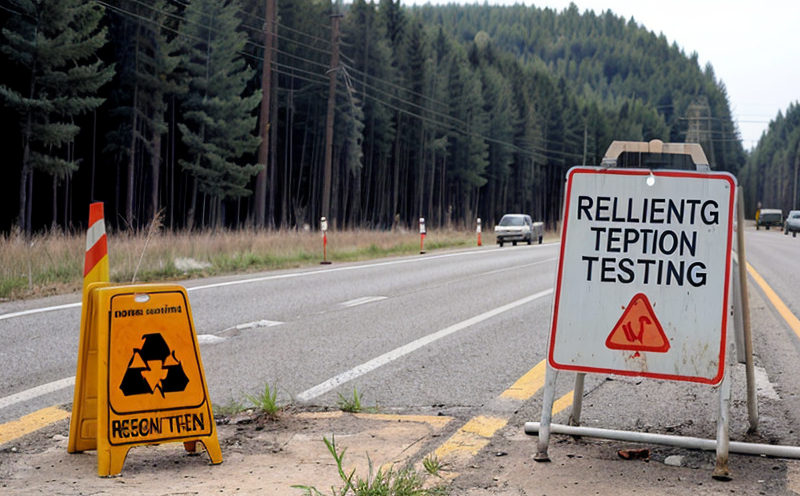ISO 18589-10 Measurement of Radionuclides in Sediments
The ISO 18589-10 standard provides a comprehensive approach for the measurement of radionuclides in sediments, which is critical for environmental protection and public health. This method ensures accurate quantification of radionuclides such as uranium (U), technetium (Tc), and cesium (Cs) among others, thereby facilitating compliance with regulatory standards.
The testing procedure outlined in ISO 18589-10 involves several key steps including sample collection, preparation, digestion, separation of radionuclides from matrix components, and measurement by means of high-resolution gamma spectrometry or other suitable analytical techniques. The accuracy of the results heavily depends on proper sampling practices, which should follow standardized procedures to ensure that representative samples are collected.
One of the challenges in this testing process is the potential for interference from naturally occurring radionuclides and the need for thorough sample preparation to avoid contamination. Therefore, it is essential to use high-quality reagents and certified reference materials throughout the entire procedure. Additionally, personnel involved should be trained specifically on handling radioactive samples safely.
The scope of this service includes not only laboratory analysis but also consultation regarding sampling protocols designed to meet specific project requirements. Our team can assist you in understanding how best to approach your particular situation so that accurate measurements are obtained efficiently and cost-effectively.
Our facility adheres strictly to international standards including ISO 18589-10, ensuring reliability and validity of the results provided. This commitment to quality ensures compliance with regulatory requirements worldwide.
Scope and Methodology
The scope of this service encompasses the complete measurement process as described by ISO 18589-10. It begins with field sampling where trained personnel collect sediment samples from various locations based on predetermined criteria outlined in the standard.
- Sample Collection: Sediments are collected using appropriate equipment to ensure minimal disturbance of the surrounding environment.
- Preliminary Analysis: Initial assessments determine whether further analysis is necessary or if immediate action should be taken.
- Sample Preparation: Selected samples undergo extensive processing steps aimed at removing non-target elements and reducing potential interference during subsequent analyses.
- Metering Techniques: High-resolution gamma spectrometry is used to detect and quantify radionuclides present in the sample.
The methodology follows strict protocols specified within ISO 18589-10, ensuring consistency across all tests conducted. This includes calibration of instruments against known standards, quality control checks at every stage of the process, and validation procedures to confirm reliability.
Our laboratory uses state-of-the-art equipment calibrated according to international guidelines to perform these analyses with precision and accuracy. By adhering meticulously to ISO 18589-10, we guarantee reliable results that can be trusted for decision-making purposes.
Why Choose This Test
- Compliance: Ensures adherence to relevant environmental regulations and guidelines.
- Accuracy: Utilizes advanced analytical techniques ensuring precise quantification of radionuclides.
- Reliability: Results are repeatable and consistent with internationally recognized standards.
- Safety: Strict adherence to safety protocols minimizes risks associated with handling radioactive materials.
- Efficiency: Streamlined processes reduce turnaround times without compromising quality.
- Expertise: Highly qualified staff equipped to handle complex samples and challenging conditions.
By choosing our ISO 18589-10 service, you gain access to a range of benefits that enhance your ability to manage environmental risks effectively. Our comprehensive approach ensures thoroughness while maintaining efficiency, making it easier for you to make informed decisions based on accurate data.
International Acceptance and Recognition
The ISO 18589-10 standard has gained widespread acceptance globally due to its robust framework that guarantees consistent results across different laboratories. Many countries have adopted this method as part of their national standards for measuring radionuclides in sediments.
International organizations such as the International Atomic Energy Agency (IAEA) recommend ISO 18589-10 because it provides a reliable foundation for assessing environmental contamination levels accurately. This standard is particularly useful when comparing results from multiple jurisdictions or conducting cross-border studies.
The recognition afforded by this international standard enhances confidence in your testing outcomes, making them more credible both locally and internationally. It also simplifies compliance efforts as you align with global best practices.





